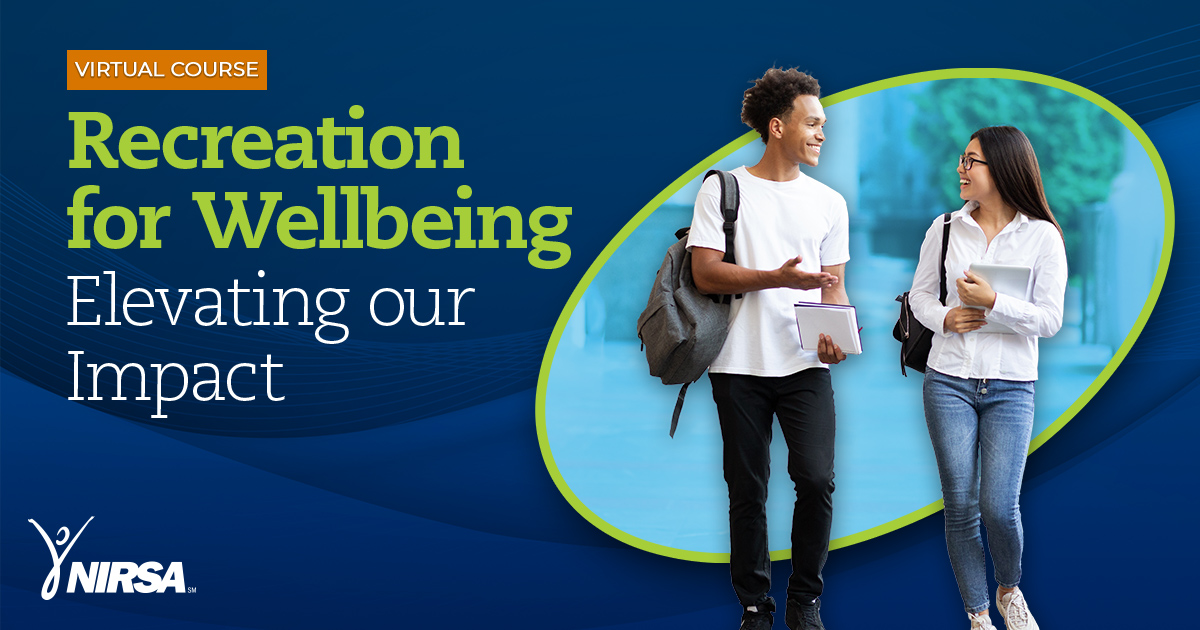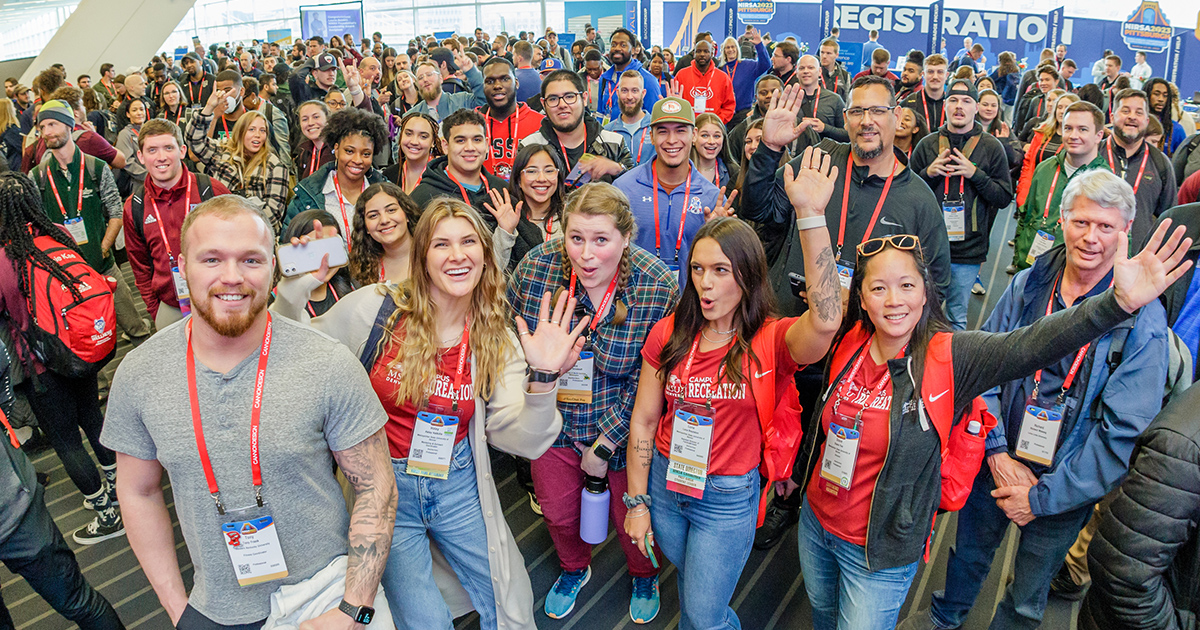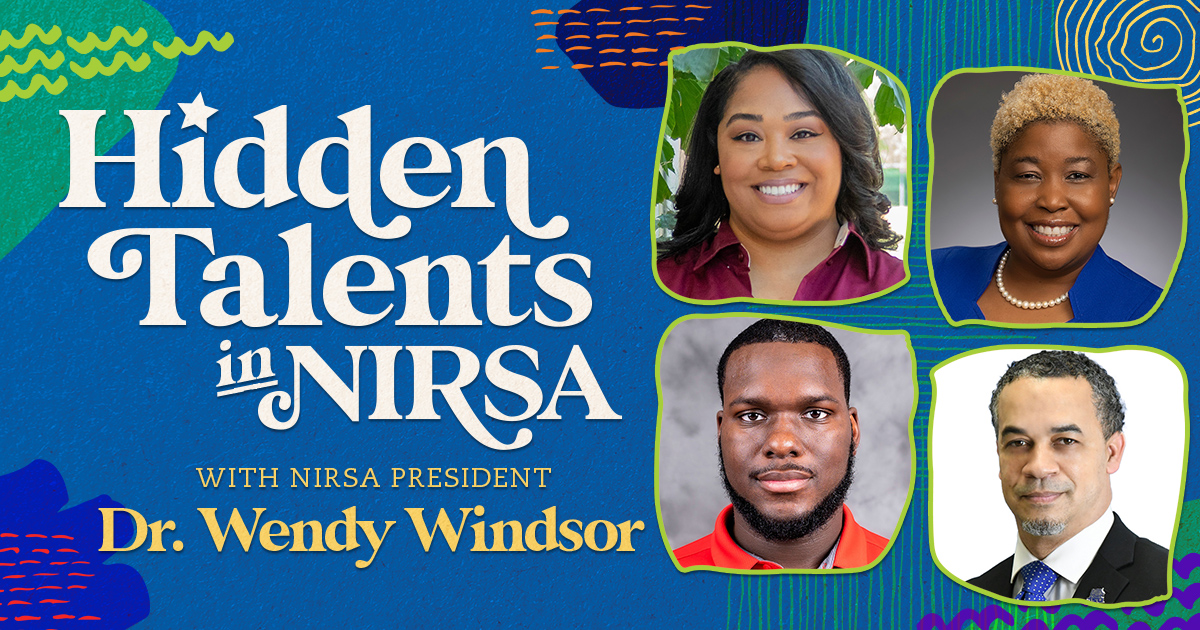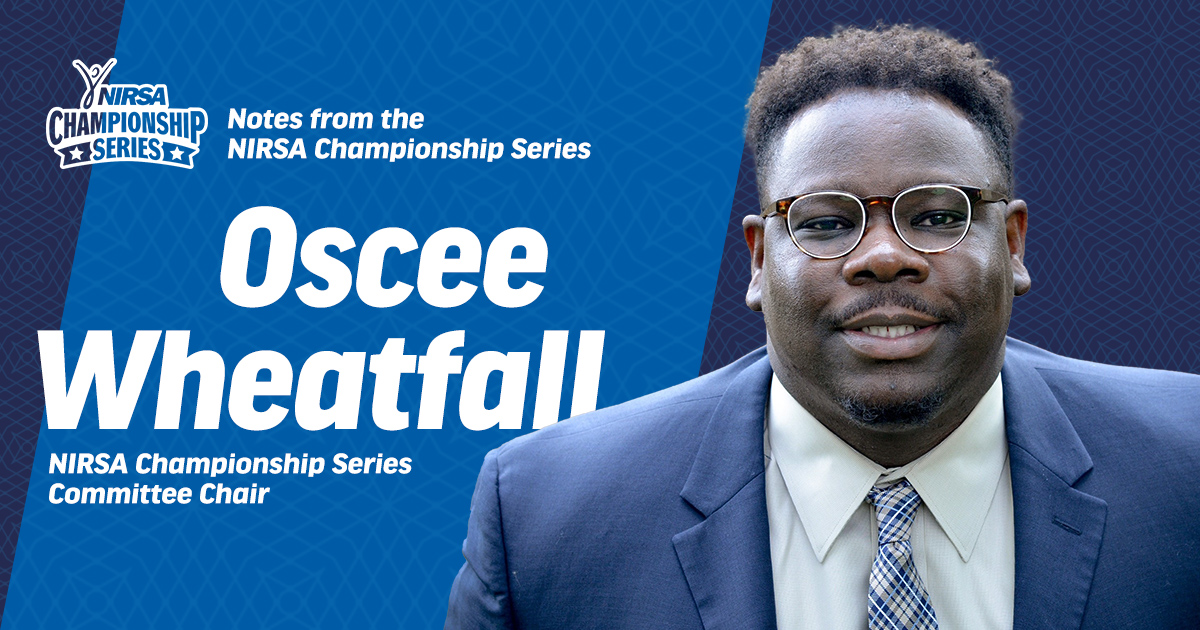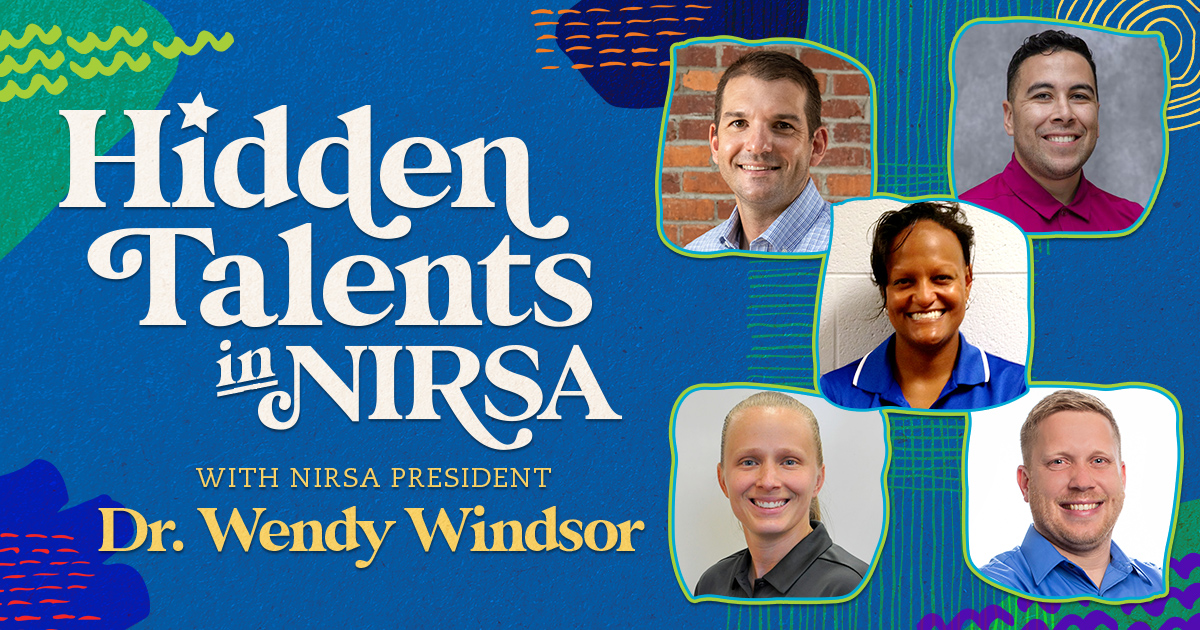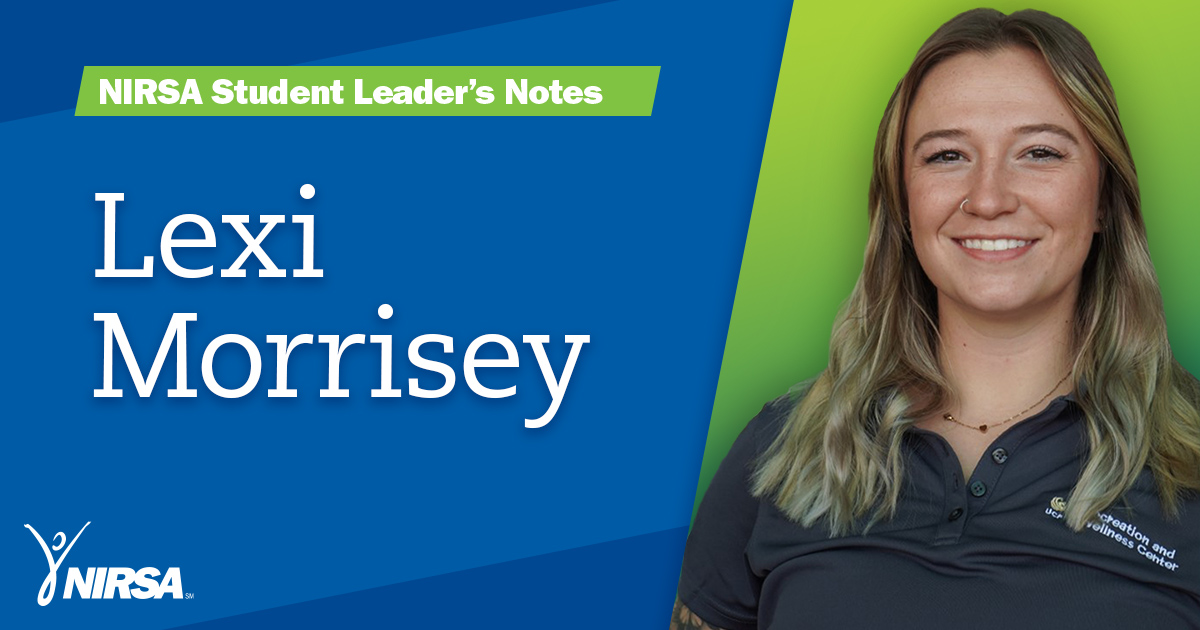The NIRSA Health and Wellbeing Task Force is launching its first-ever course for recreation professionals: “Recreation for Wellbeing: Elevating Our Impact.” The eight-week course aims to provide attendees with a comprehensive understanding of wellbeing, the knowledge to apply wellbeing principles to one’s daily work, and the tools to create action and advocate for wellbeing on your campus.
The Wellbeing Briefing Work Group recently sat down with one of the leading creators of the course, Mark Ferguson, Executive Director at Ohio University, to provide inside information on the goals and the value the Task Force hopes to bring to course attendees.
Wellbeing Briefing Work Group: Why did the NIRSA Health and Wellbeing Task Force decide to develop the “Recreation for Wellbeing Course?”
Mark Ferguson: We really wanted to create an opportunity for all members to explore how their work can contribute to individual and community wellbeing and to help them make those connections. Obviously, the last few years, we have seen a major emphasis on promoting more holistic approaches to wellbeing; but, at the same time, we are hearing some confusion about what it all means and of the challenges of how to put these holistic approaches into action. Ultimately, we saw a need for the course to establish a baseline understanding around wellbeing and to help folks begin to answer the question: “Yeah, but how?”
Who could benefit from participating in this course? Why should a NIRSA member consider registering?
The beauty of wellbeing work—and this course—is that everyone has an opportunity to contribute, regardless of their role, budget, experience level, etc. The course is designed for participants to engage with the content and with their fellow participants, so it will be beneficial whether someone is just starting out in this direction, or someone who is looking to take the next step in their existing wellbeing work. I would also encourage folks to consider registering a small group from their institution. The course includes a notable focus on thinking through how participants can utilize the content to take actions (large or small) on their own campus. So, having other colleagues on that journey with you could be an fruitful way to maximize that part of the course.
How do you see this course developing or changing in the next five years?
We are learning more and more every day about the factors that contribute to both individual and community wellbeing so this course will inevitably evolve with that learning. There are also tremendous numbers of new ideas and initiatives being implemented across the country right now, and future iterations of the course will be able to incorporate the successes and learnings from those. I would say that this course is a starting point and hopefully creates a foundation for future learning opportunities. There are so many facets to wellbeing and avenues for making a difference that I think there could be interesting opportunities to dig into those more deeply.
What will participants receive from the course? Will continuing education credits be available?
Participants will have access to a shared community with the facilitators/presenters and fellow participants to engage in discussions. They will also receive a guide to document their progress through the course. Our intent is for each participant to finish the course with an action plan for starting or furthering their wellbeing work on campus. I’m excited to see each of those components come together. Continuing Education credits (CEs)—which can be applied to CSAEd certification requirements—will be provided for participants that complete the full course.
How was the content for the course developed?
It’s been an iterative process of development, with feedback from the NIRSA Health & Wellbeing Task Force, NIRSA Staff, as well as other leading perspectives in the recreation and wellbeing fields. The content draws on the work and expertise of the current and past NIRSA Health & Wellbeing Task Force, as well as current resources and practices in the field. With that said, we recognize that sometimes the resources available right now can be overwhelming and a barrier to getting the work started or expanding beyond your own area. So, while the course has plenty of resources to share, the focus is on how to make tangible progress on your campus.
Can this course be tailored to meet the specific needs or goals of an academic institution or organization, such as a smaller school or a larger institution?
Yes, absolutely! We have been very intentional in developing the course—in terms of overall content and examples—to be relevant to participants regardless of their individual role, experience level, budget, public/private institutions, large/small institutions, etc. All those factors can introduce their own barriers to taking on this holistic wellbeing approach and we hope to dispel some of those barriers through this course.
Registration for the inaugural Recreation for Wellbeing Course is open through January 17. View the course outline, learning objectives, and additional details on the course registration page. Gather your teams and join us for eight weeks of connection, dialogue, critical thinking, and growth.
- For more information, contact Erin O’Sullivan, Director of Advocacy & Strategic Partnerships at NIRSA or a member of the Wellbeing Briefing Work Group.
The Wellbeing Briefing Work Group works in conjunction with the NIRSA Health & Wellbeing Task Force. The work group is responsible for putting together the Wellbeing Briefing and currently includes Lindsay Brookey (Co-chair), Assistant Director, Fitness at North Carolina State University, Lisa Williamson (Co-chair), Associate Director for Fitness, Well-being & Student Engagement at the University of Georgia, Lauren Arnoff, Assistant Director of Campus Recreation and Wellness at Rensselaer Polytechnic Institute, Leah Bank, Senior Coordinator, Fitness and Wellness at California State University, Bakersfield, Agnelia “Tiffany” Hernandez, Coordinator of Assessment at Texas Southmost College, Muriel Hyndman, Fitness Coordinator at Iowa State University, Trey Knight, Assistant Director, Student Aquatic Center & Outdoor Pursuits at the University of Knoxville, Jake Minnis, Assistant Director of Fitness & Wellness at the University of Arizona, and Kristin Traskie, Interim Associate Director of Health Promotion at Michigan State University.

